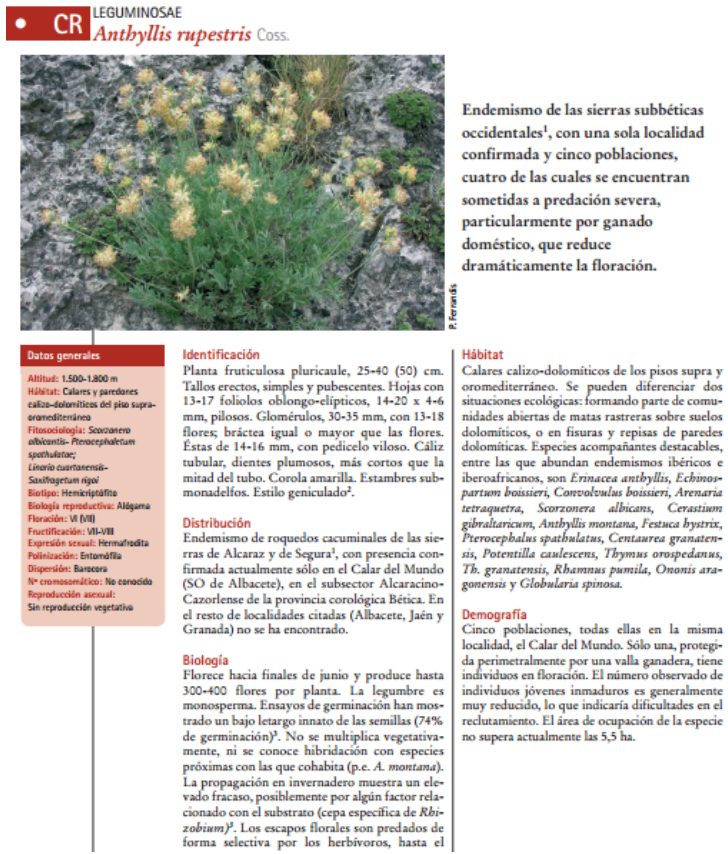Abstract
Anthillys rupestris Coss. is a rare, endangered and endemic plant from the south of the Iberian Peninsula. The phylogenetic relationships of A. rupestris and its genetic variation were studied to assess the distribution of genetic variability within and among six subpopulations from two remnants locations. We obtained sequences of internal transcribed spacer ITS2 of three Anthyllis species and ISSRs markers to estimate gene diversity and the genetic structure of the subpopulations. A. rupestris was closely related to two other endemic species to southeastern Spain. The ISSR analyses revealed high level of genetic diversity [61.59% average polymorphism; and HT = 0.269] in subpopulations and a moderate level of genetic differentiation [(GST) = 0.267] among subpopulations. Furthermore, analysis of molecular variance (AMOVA) revealed that 18% of the total genetic diversity resided among the two analysed areas, 12% among subpopulations and 70% variation was found within subpopulations. Principal Coordinates Analysis (PCA) partially grouped together the genotypes according to their geographical origin. Three out of the four subpopulations from one location were genetically related to each other, and the remaining subpopulation, which was fenced, was isolated from the obtained clusters. The data are interpreted as a result of recent fragmentation and isolation. Threats to this species are mainly anthropogenic. Because A. rupestris currently retains a high genetic variation among individuals within subpopulations, a metapopulation perspective preserving and expanding the habitat at each site, in order to promote connectivity would be an additional strategy to ensure conservation before populations become too small to persist naturally.
Keywords: Anthyllis, Endemic, Habitat fragmentation, ISSR, ITS, Population genetic structure.



Leave a Reply